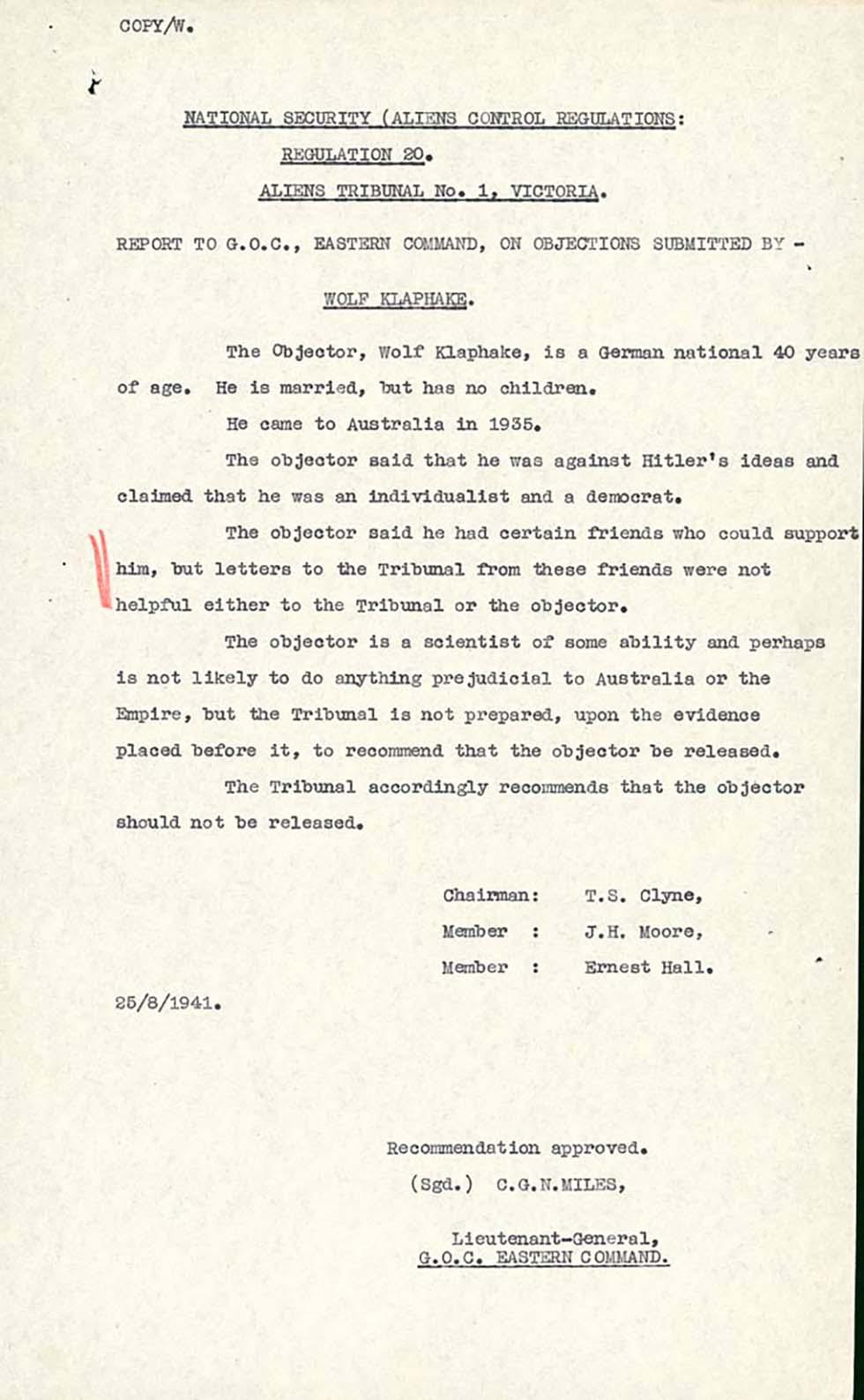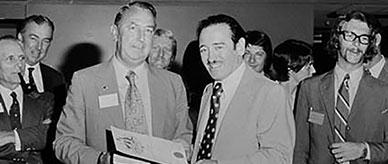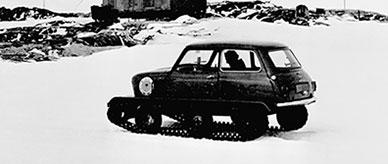


About this record
This one-page report is part of a series of official documents concerning Wolf Klaphake, a German national who was classed as an enemy alien and held in an internment camp in Australia from 1940 to 1944. The report is addressed to the General Officer Commanding (GOC) Eastern Command and is headed 'National Security (Aliens Control Regulations: Regulation 20. Aliens Tribunal No. 1, Victoria'. It is dated 25 August 1941.
Educational value
- This document indicates the problems faced by German, Italian and Japanese internees, among others, who were applying for release from internment camps between 1939 and 1946. Australian residents born in nations then at war with the Allies were suspected of sympathy with enemy nations. Thousands of ‘enemy aliens’ were interned in camps around Australia during World War II.
- Enemy aliens became stateless people without citizenship rights. Not all foreign residents were interned, but under the National Security (Aliens Control) Regulations of 1939 all enemy nationals and their families were registered and restrictions were imposed on employment, travel, transfer of property and ownership of cars and radios. It was forbidden to speak languages other than English in public places or on the telephone.
- Dr Wolf Klaphake (1900–67) was a well-regarded chemist who migrated to Australia in 1935 with his wife Maria, a psychologist, to work on a water condensation plant and garbage recycling. Despite years of residence and offering his inventions to the Australian Government, Klaphake was identified as a potential threat when Australia declared war on Germany in 1939. His employer and friends tried unsuccessfully to prevent his arrest and internment in 1940.
- Klaphake denied any Nazi sympathy and made repeated unsuccessful efforts to gain release from at least three internment camps. Although appeals tribunals noted his scientific abilities, doubts remained about his connections with a German munitions firm and his application to join the Nazi Party in 1935. Klaphake explained the connections as being necessary because of his research work on a synthetic camphor and said he had never paid dues to the Nazi Party or attended its meetings.
- Klaphake's case is an example of the difficulty internees experienced. He had some grounds for release as a political refugee – his flat had been raided by Nazi police in Germany, possibly because his wife was a sex psychologist. Despite the support of friends in Australia and his refusal to associate with Nazi sympathisers in the camps, Klaphake could not convince the tribunals that he did not harbour secret beliefs that presented a security threat.
- Although the document does not mention the physical and mental effects of internment on Klaphake, other reports and Klaphake's own writings during this period make it clear that he suffered ill health during his time in the camps. He writes of the depression and despair he felt over what he believed was the unreasonable continued refusal of the tribunal to release him. It was not until 30 August 1944 that Klaphake was released after more than four years of detention.
- Despite his internment, Klaphake applied to be naturalised as an Australian citizen only six months after his release and subsequent move to Sydney. Prohibitions against former internees were still strong so it was more than 18 months before his application for citizenship was successful. As a condition of applying for citizenship he was obliged to hand over his German passport and to sign a statutory declaration rejecting his German nationality.
Acknowledgments
Learning resource text © Education Services Australia Limited and the National Archives of Australia 2010.
Related themes
Need help with your research?
Learn how to interpret primary sources, use our collection and more.



